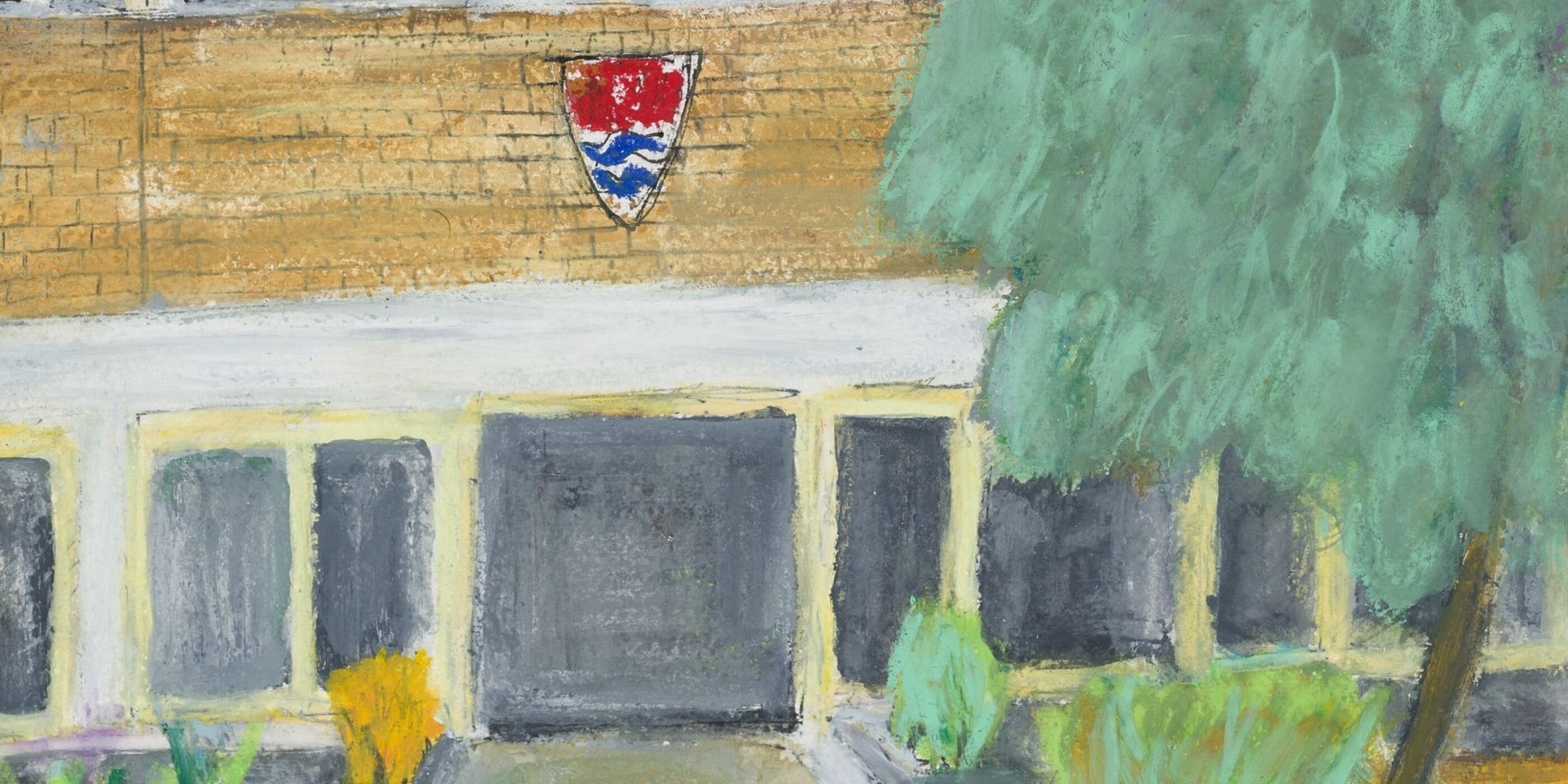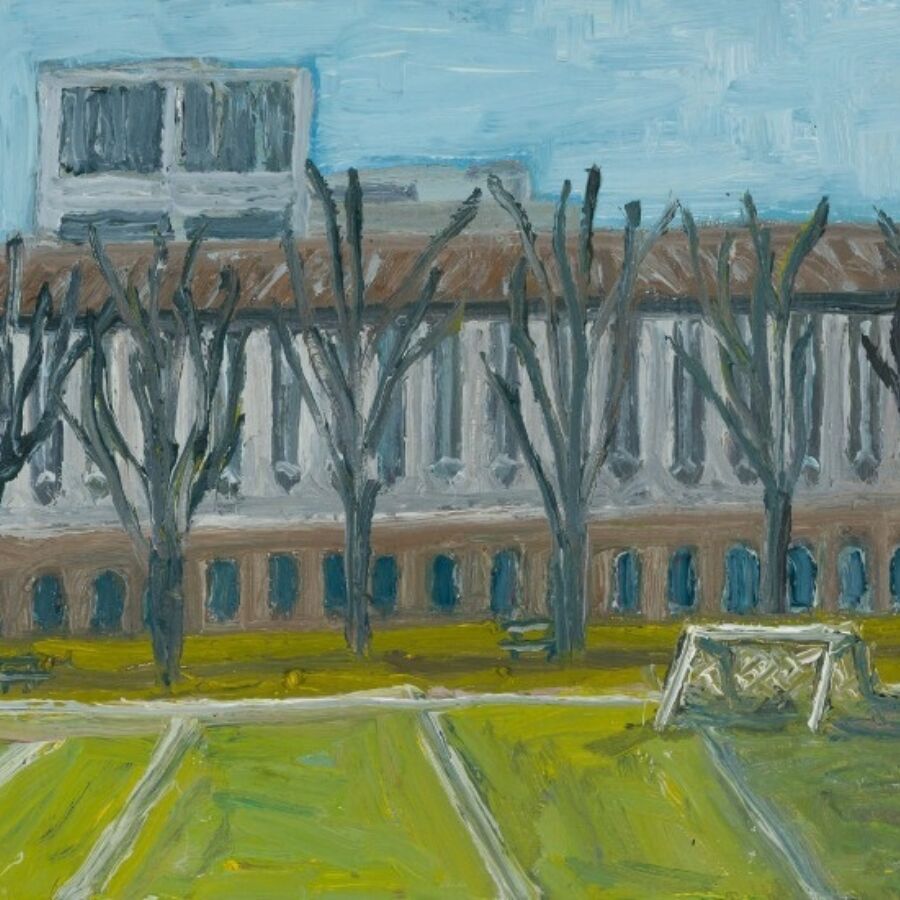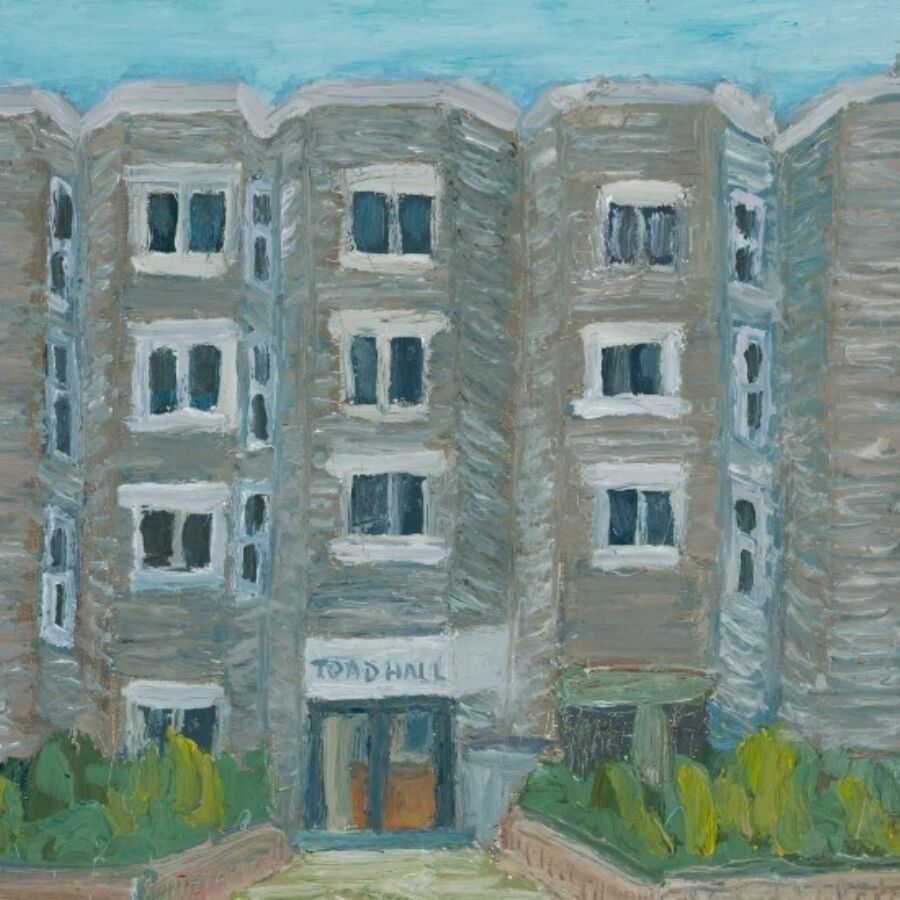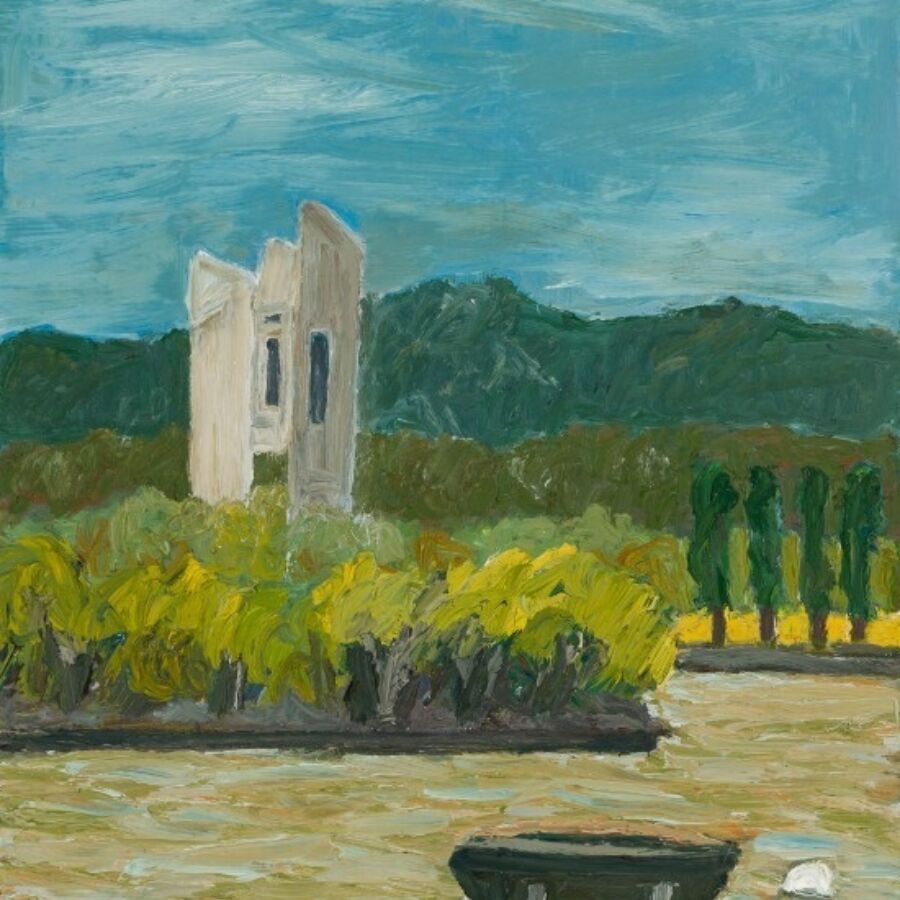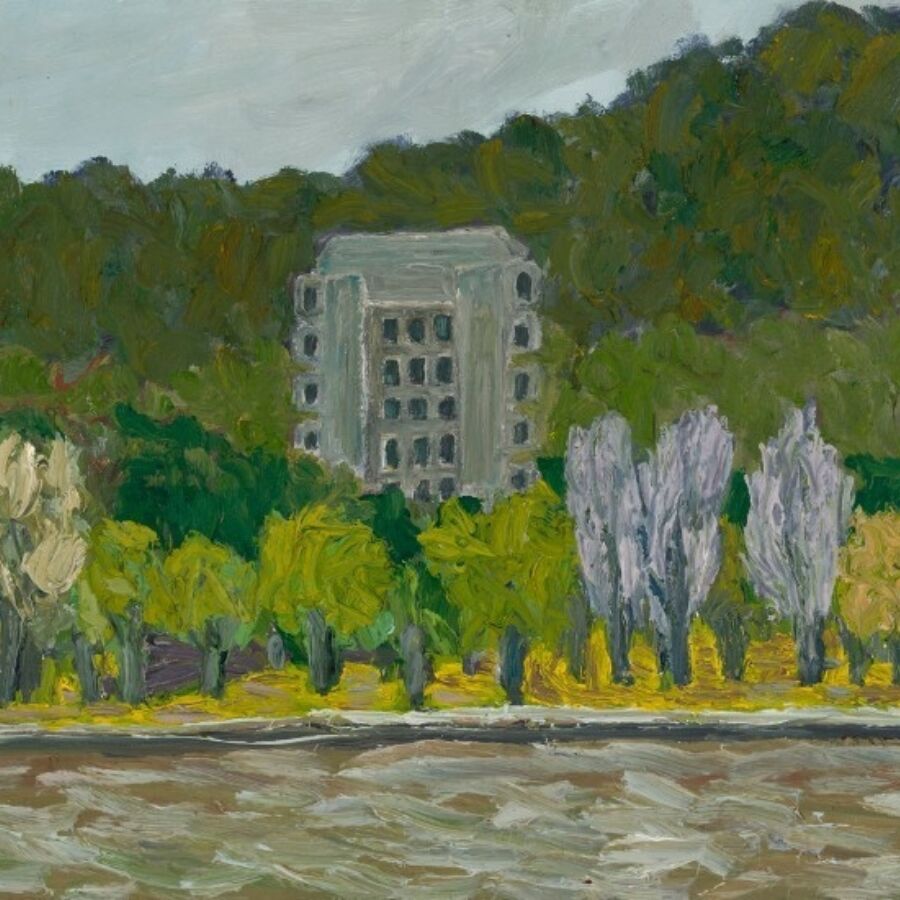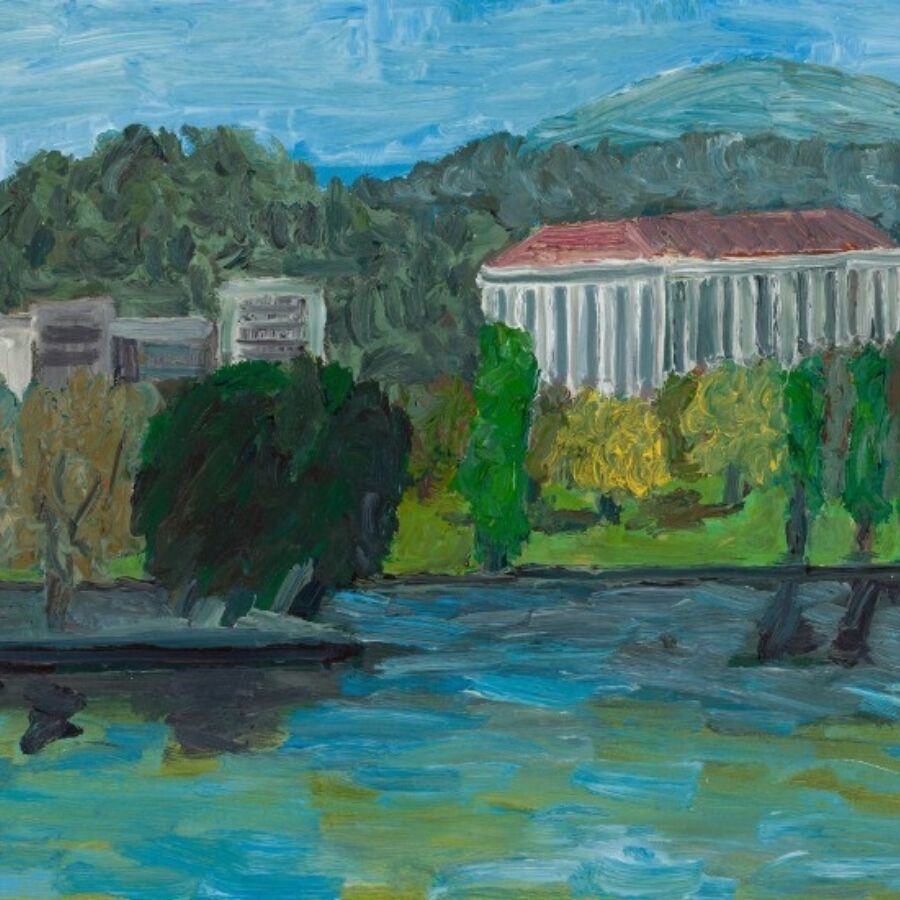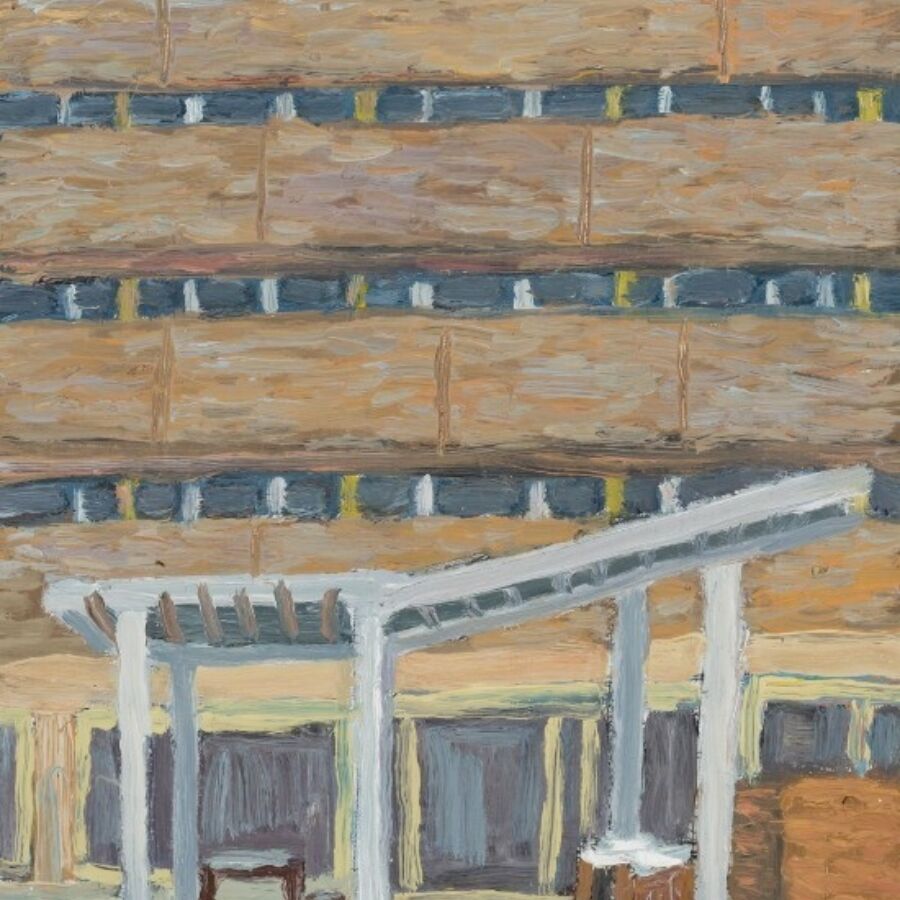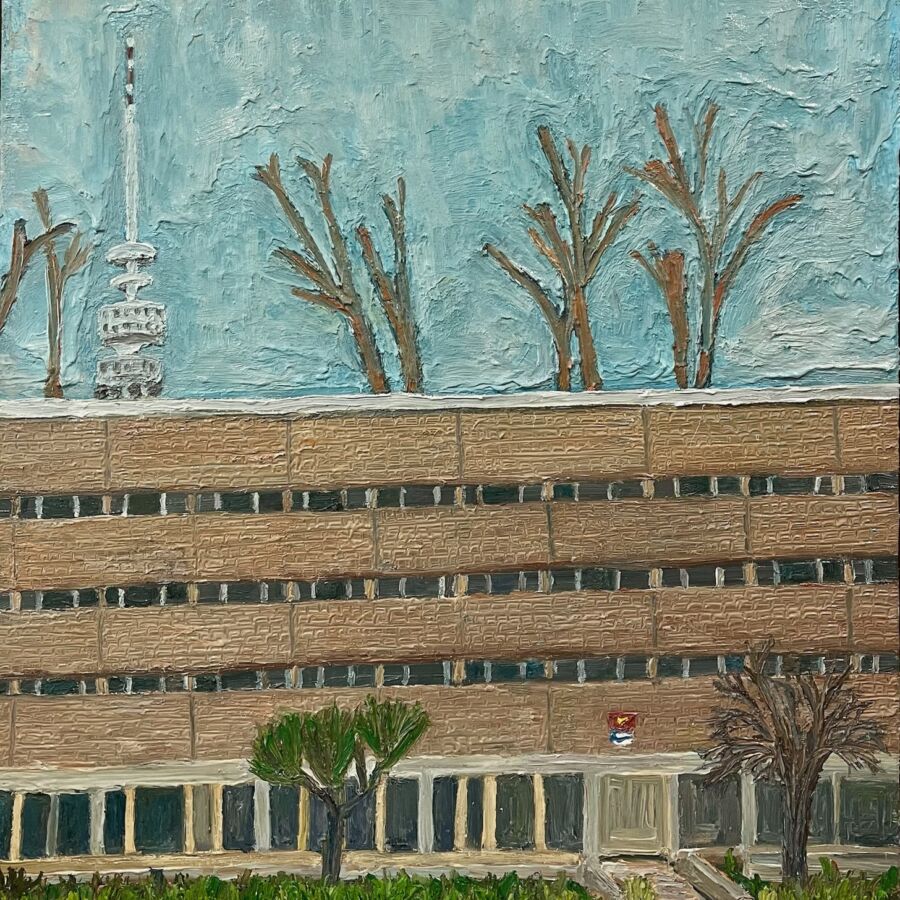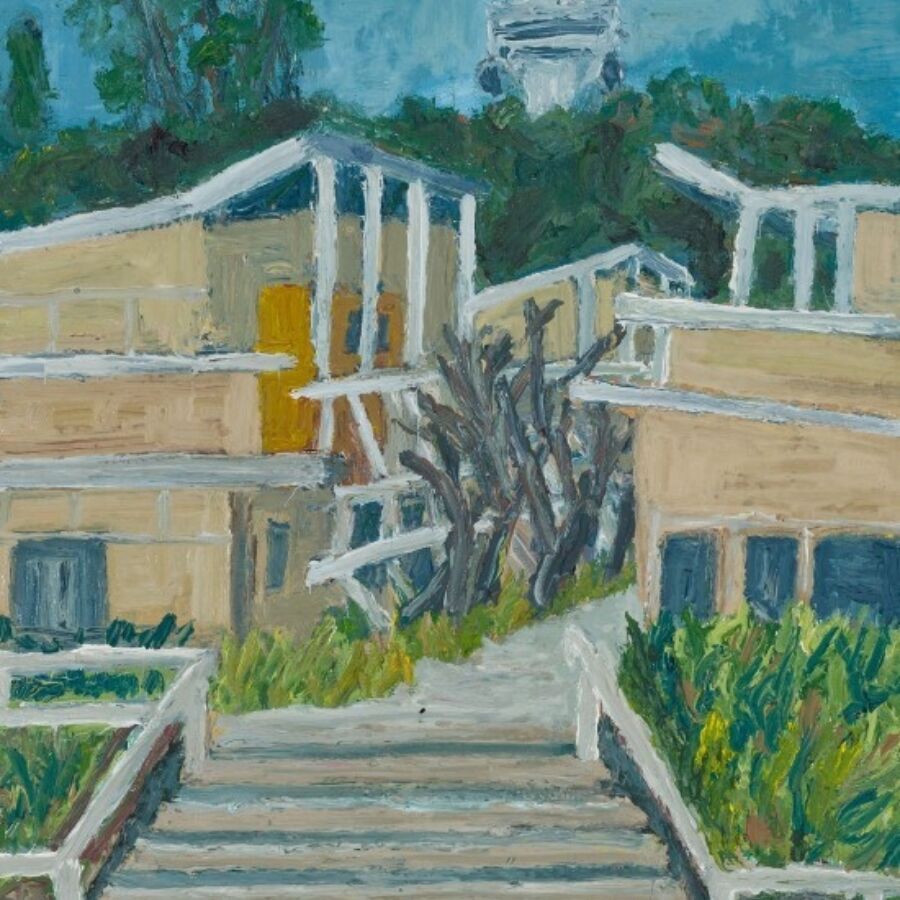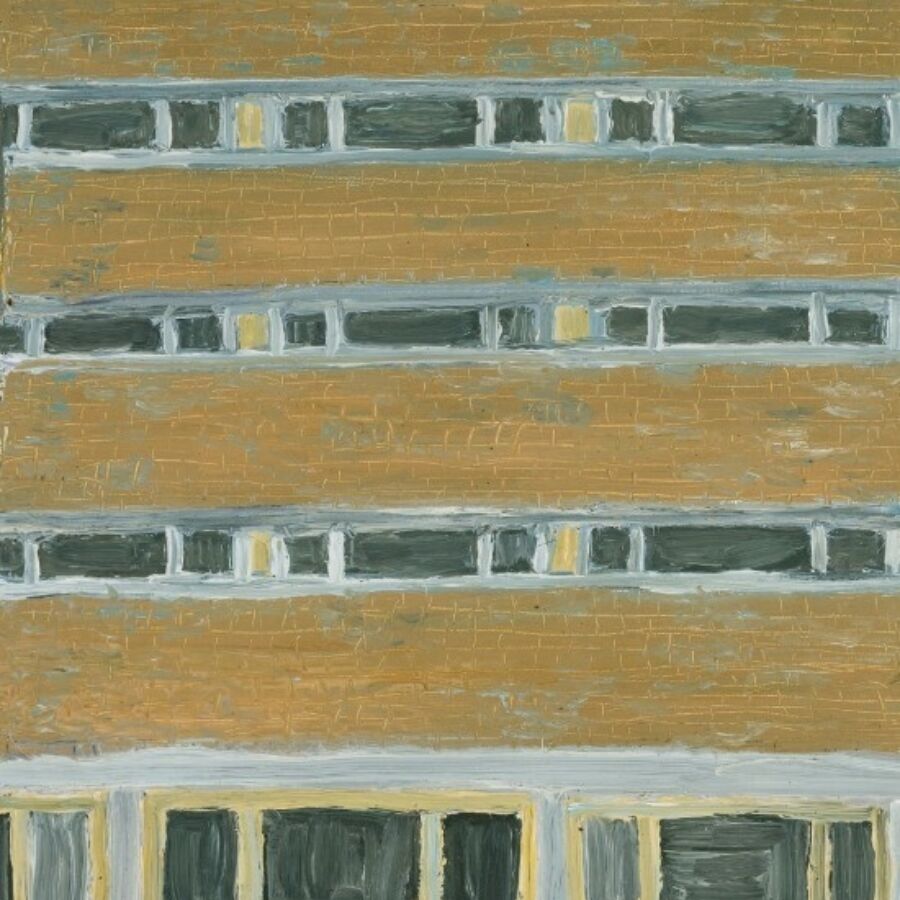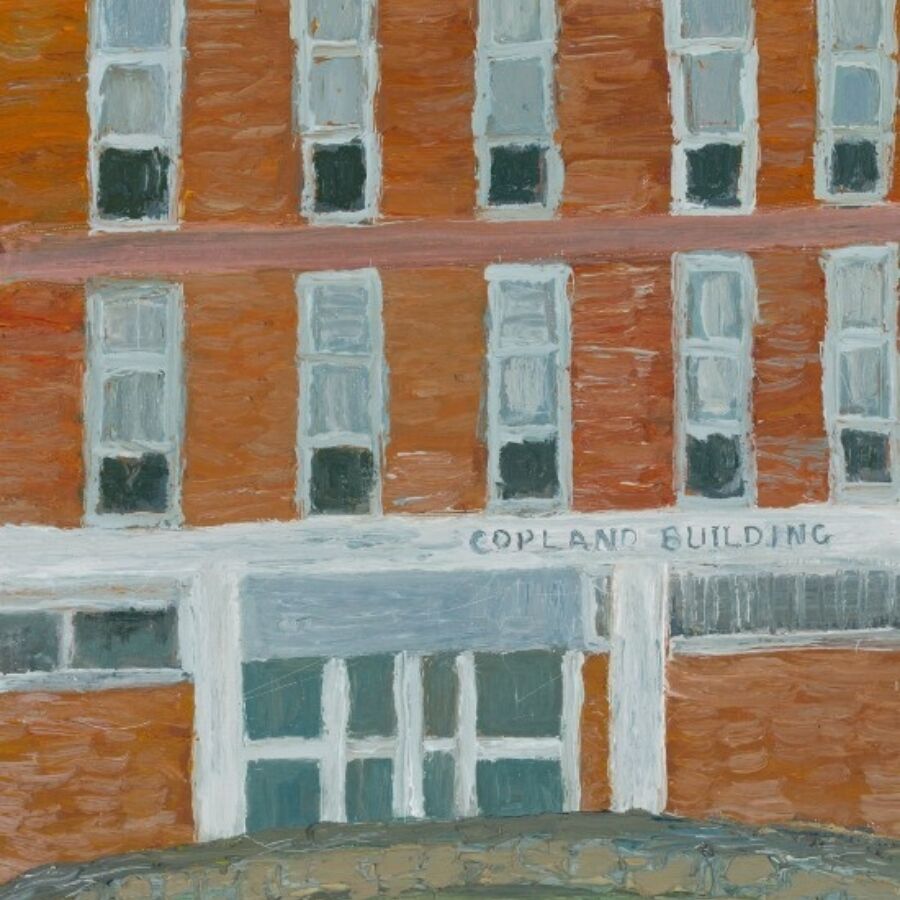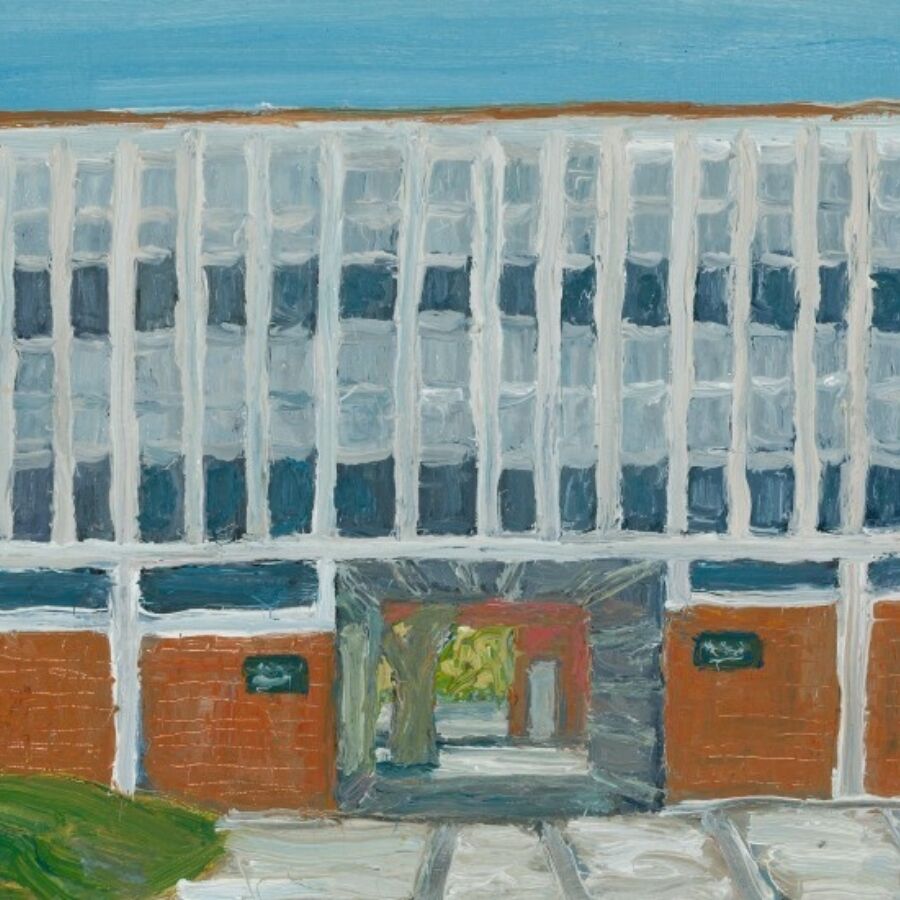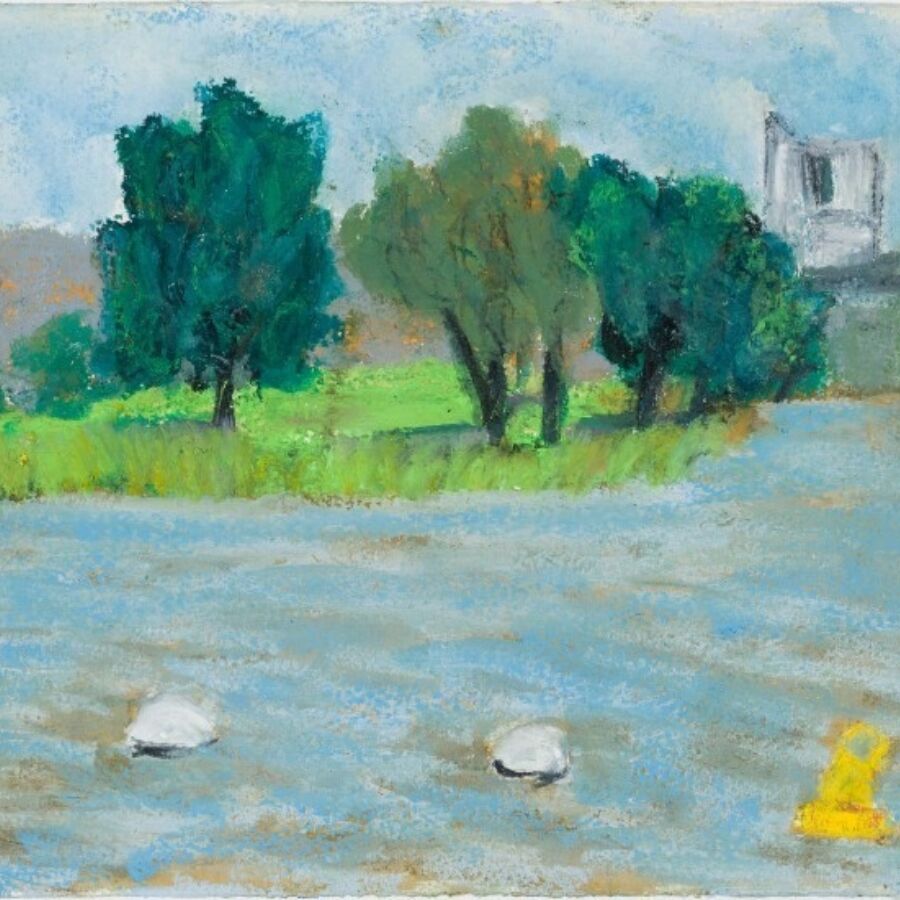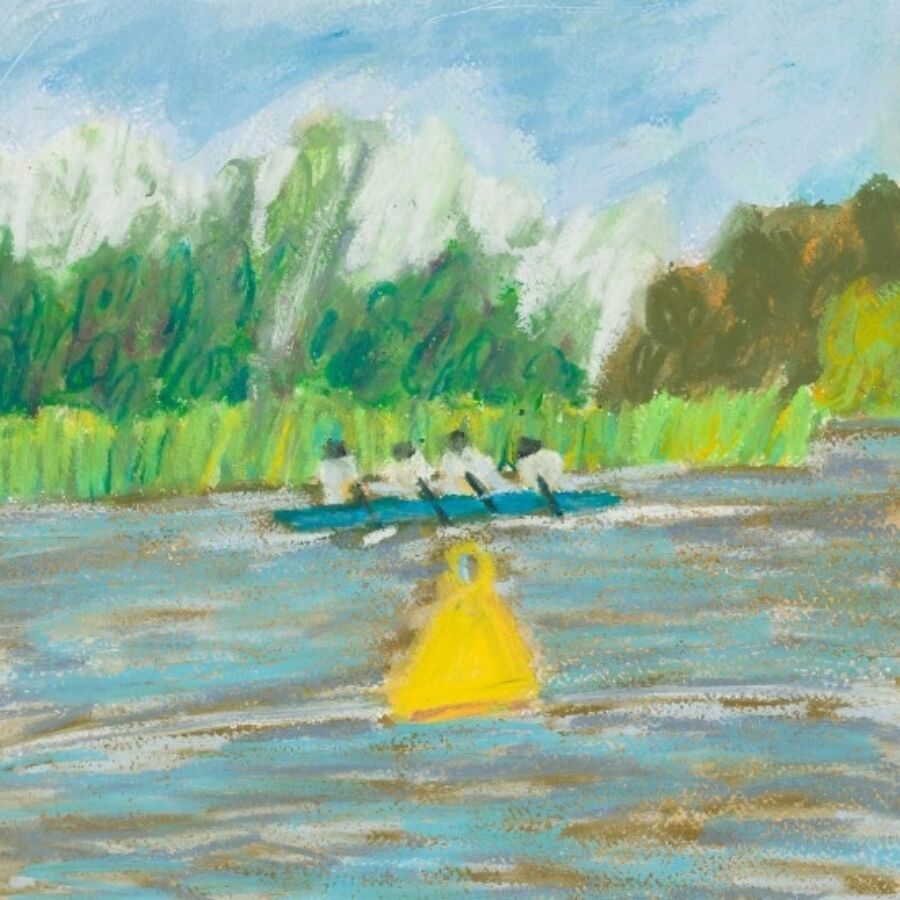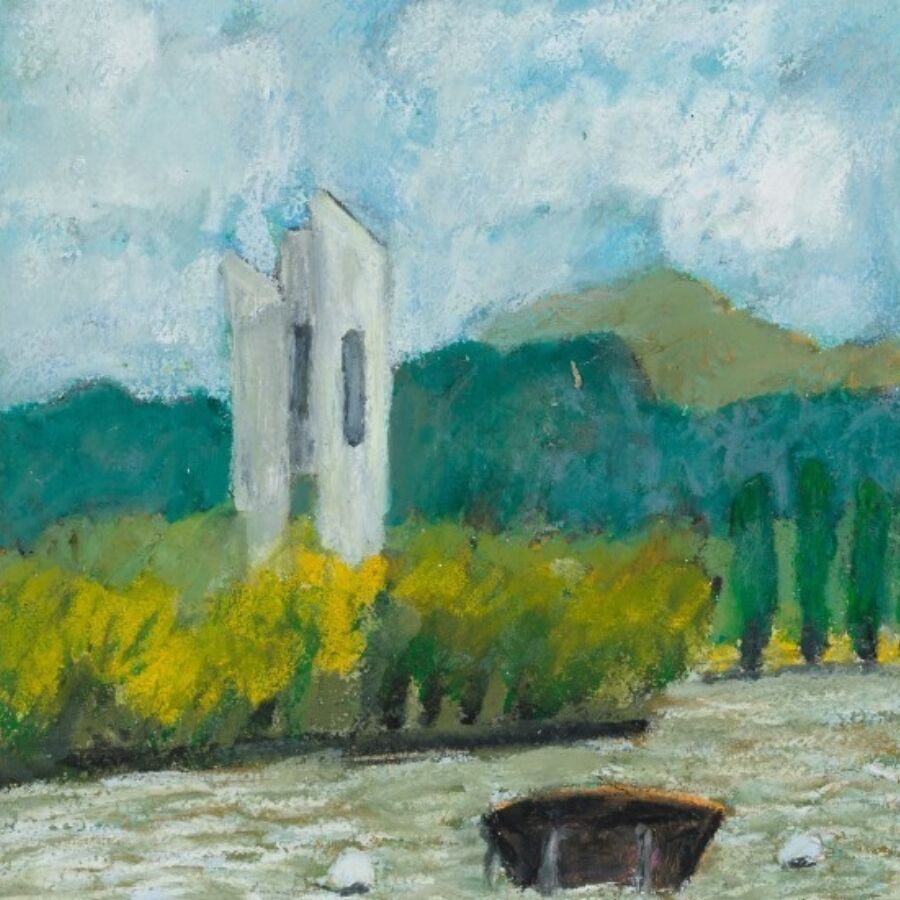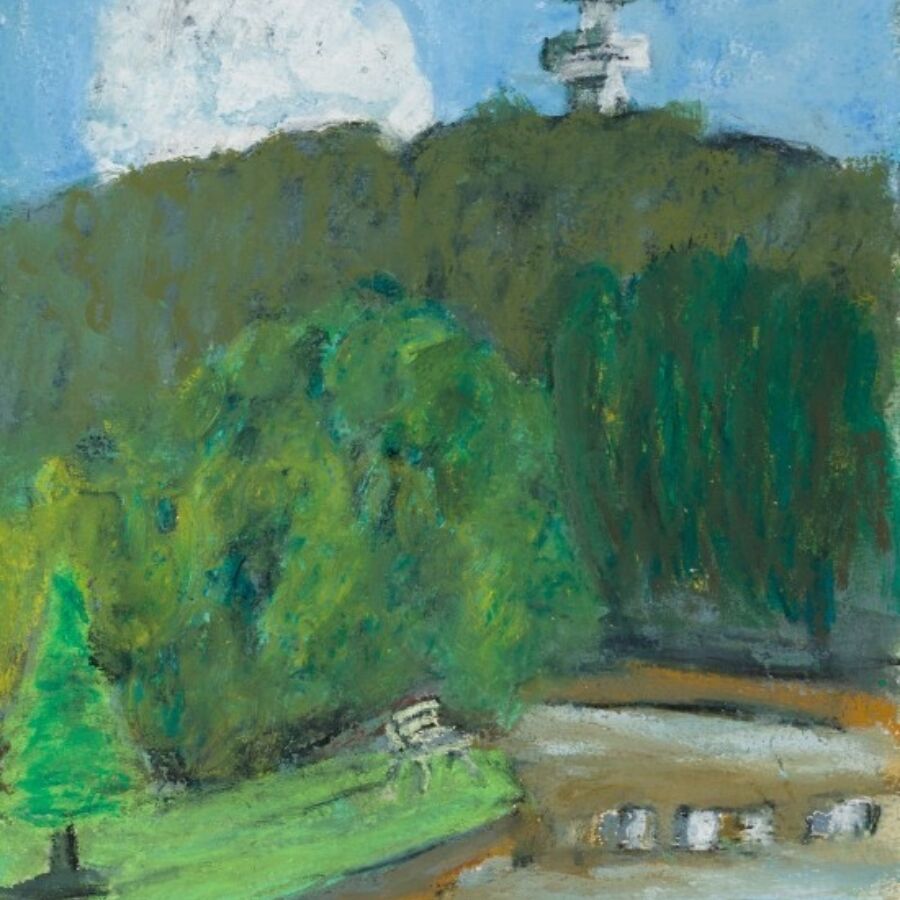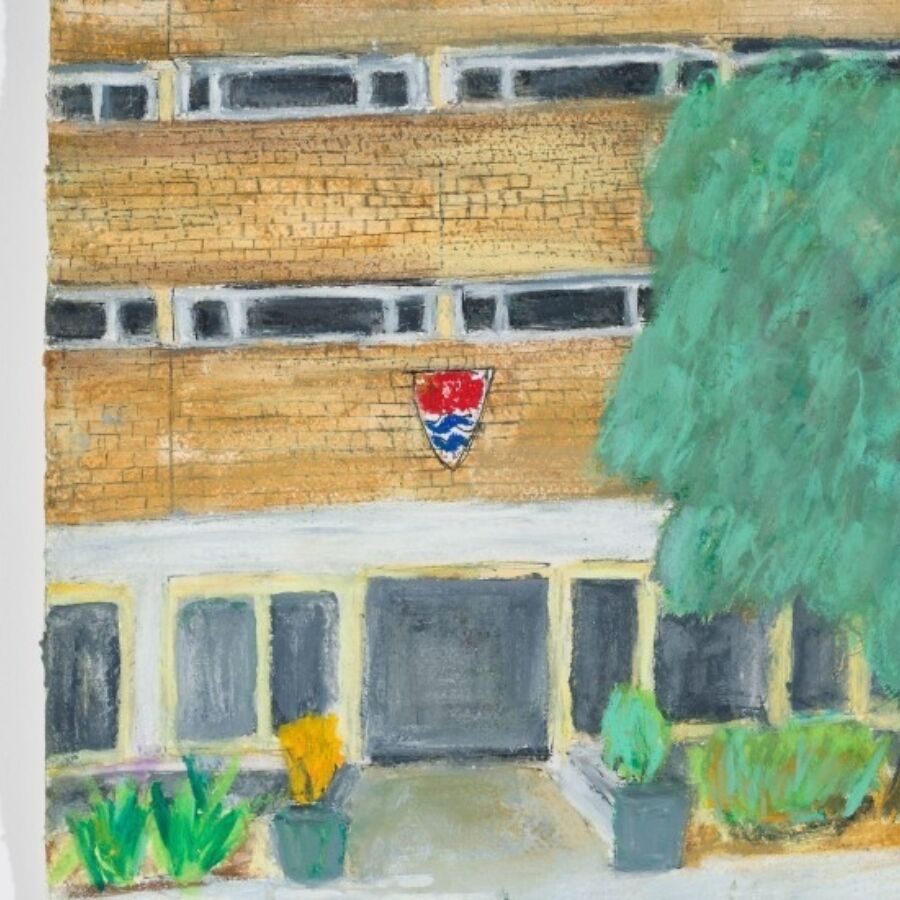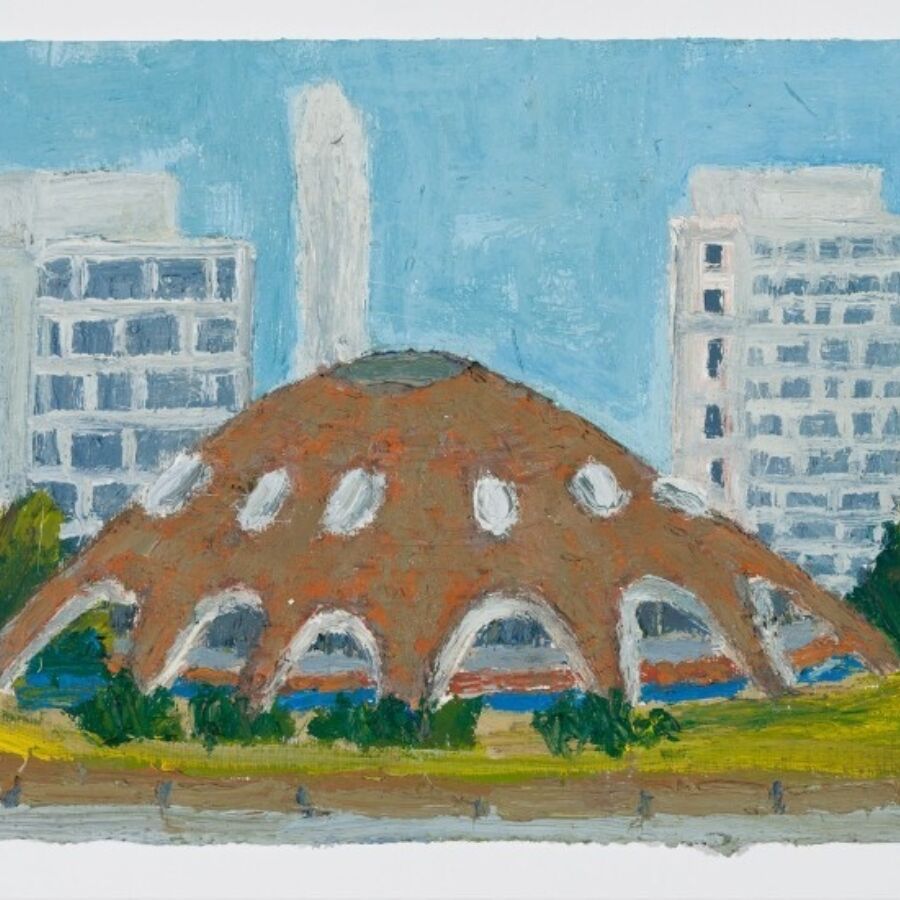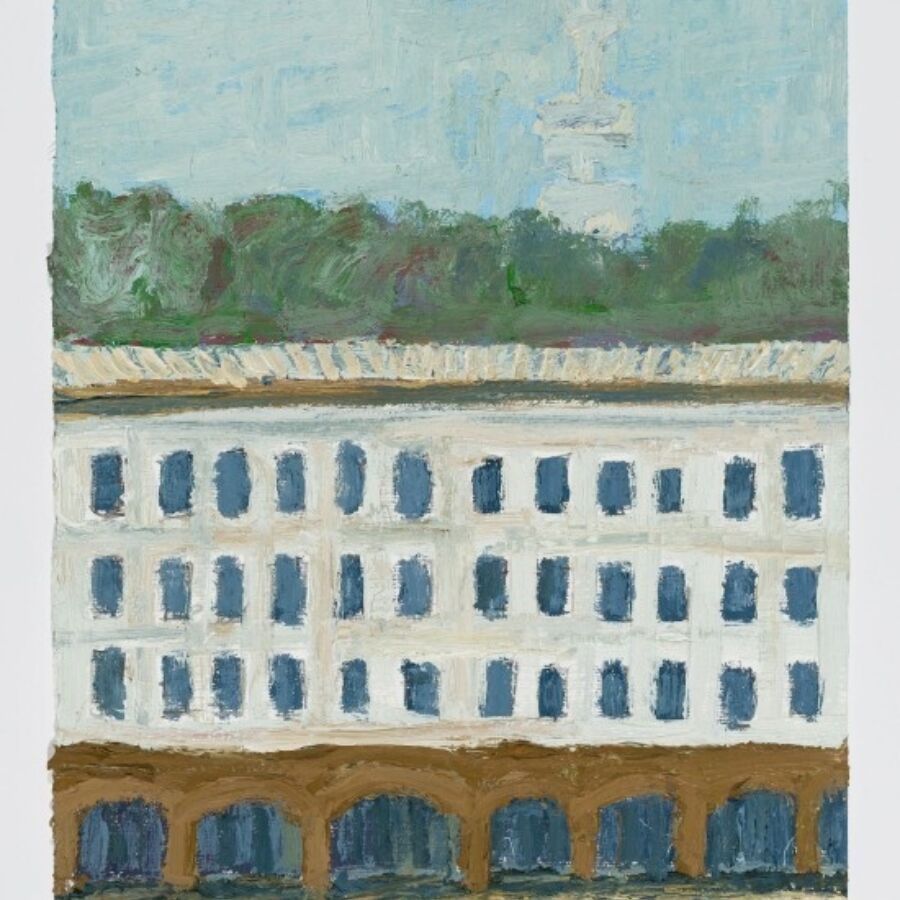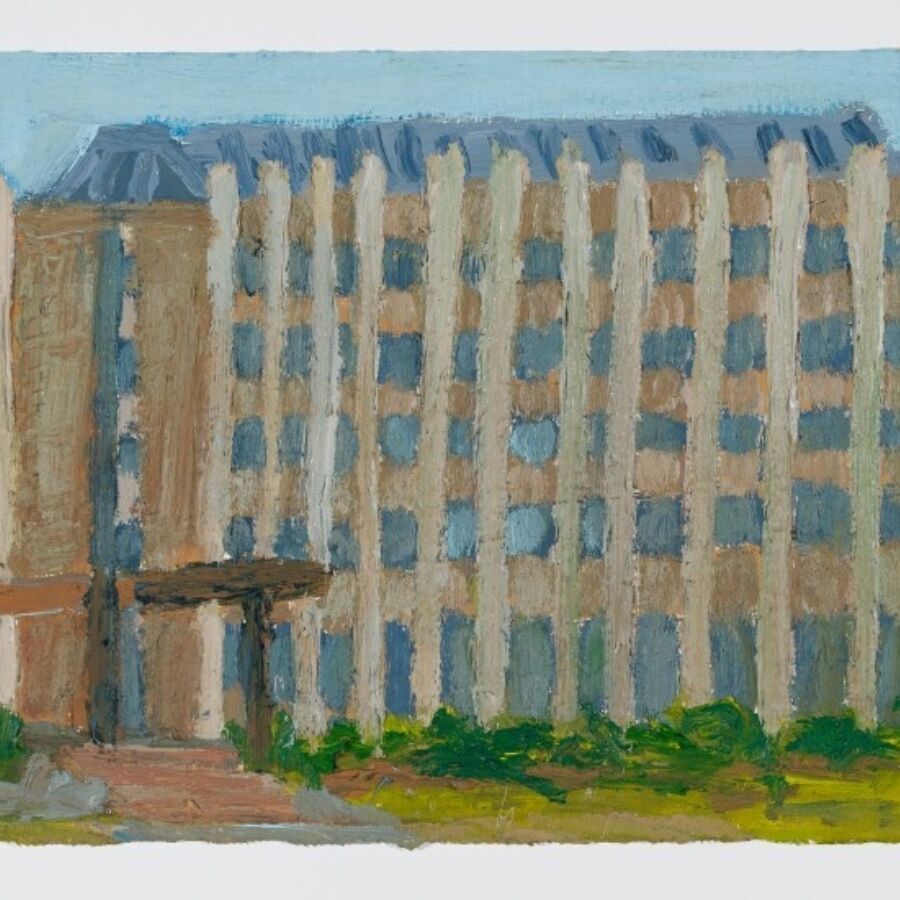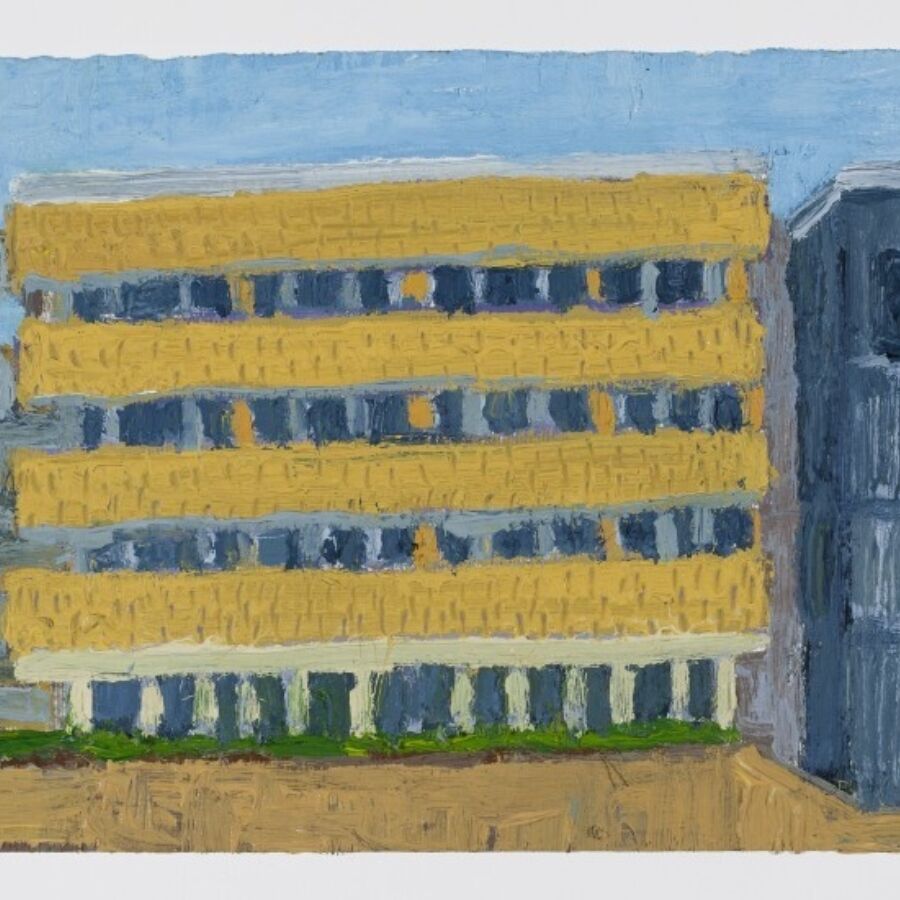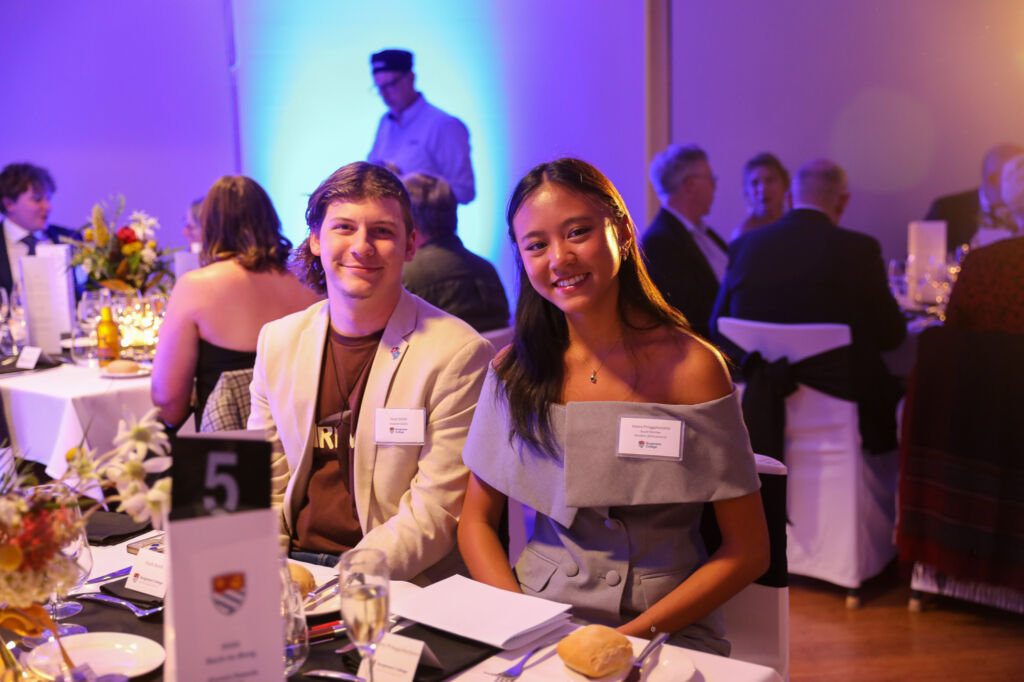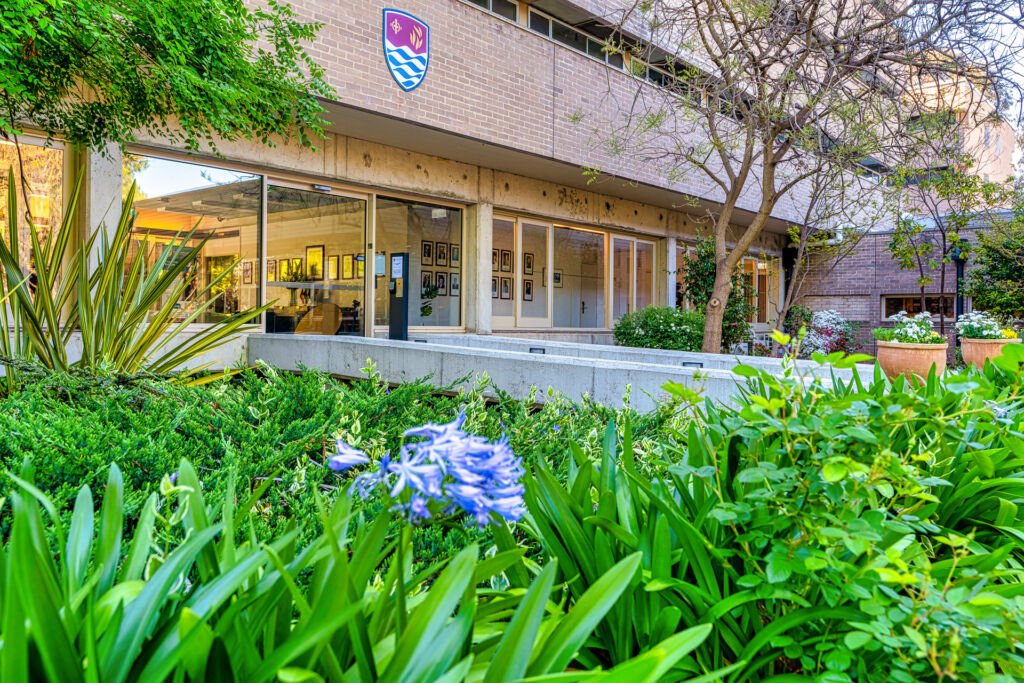Between Bush and Building: Julian Twigg on Canberra
An essay by Poppy Thomson
It is perhaps no coincidence that a residency undertaken in two stages has led Julian Twigg to unearth two essential truths about Canberra. First is that, although Canberra is a capital city, you are never far from the bush. The second is that its architecture holds a strange paradox: the eclectic façades appear frozen in time yet quietly signal its passage. Both Twigg’s two-week stays at Burgmann College fell during the student break, lending the campus a stillness. Out of this emerged a series of paintings whose joy is evident, as the artist has observed Canberra with a subtle but canny insight.
Throughout January, with the warmth of summer on his side, Twigg explored his surrounds by bike and car, capturing familiar Canberran landmarks. However, it is clear these paintings’ quintessential ‘Canberran-ness’ is not derived from any landmark alone, but rather their positioning amidst thick sweeps of green. For those unfamiliar with the ‘bush capital’, identifying these buildings may not come easily.¹ For locals, however, the exteriors of the National Library, National Gallery and Telstra Tower are unmistakable. Among the less obvious inclusions is the Carillon, a site sometimes overlooked by tourists. Regal yet ghostly, Twigg renders its exterior in clean lines—a technique appropriate of its brutalist architecture—set against the loose and expressive brushstrokes of the lake and bush. These painterly techniques emphasise that the building is almost out of place, as though a foreign object has landed in the landscape. Read altogether, the paintings remind us that while Canberra is littered with some very distinct buildings, it is equally defined by the strange and beautiful ways they inhabit the bush.
For an artist used to painting seascapes from observation, this landlocked, studio-based residency presented new ground. Twigg was tasked with merging the flux of observational painting with the memory required to bring landscapes to life in the studio. Speaking about his process throughout the residency, it is clear he did exactly that—drawing studies and blocking out compositions in pencil on site, before painting in the studio with the impression fresh in his mind. A teacher of the artist, Robert Hollingworth, wrote that Twigg doesn’t paint the ocean, but oceanity, capturing ‘these things in the process of becoming’.² The duality of observational painting and painting from memory in this suite revitalises Hollingworth’s words, as memory merges with perception, creating works that exist in the space between what is witnessed and what is remembered.
Of course, memory was double here. Twigg himself once lived in Canberra as a university student and resident of Burgmann College, completing the rarest of degrees for an artist to have: economics. Returning, he naturally gravitated towards familiar buildings, among them the undergraduate wing of Burgmann. One painting sharply crops its façade to rows of interconnected windows, bricks scratched methodically into brown paint. While the result conveys a slight homogeneity and light claustrophobia, it buzzes with the anticipation of vivid student life within. Fittingly, Twigg worked on these paintings in the very room where he once played pool and helped create the Dawborn competition, a tradition that continues to this day.
The past and the present are inextricably bound in this series. Buildings often evoke nostalgia, because they stand as a construction of the past, yet we know they are a witness to the present and all those times in between. Twigg draws this feeling out of his subjects, particularly as a series. The façade of the Copland Building, for example, is a reliquary, unchanged since Twigg’s time at university. Yet the skyscrapers that emerge from the background of his painting of the Shine Dome are a reminder that time has passed and brought with it architectural homogeneity. The Copland Building and the Shine Dome, two incredibly different buildings, were constructed within five years of each other, so Twigg’s selection of them is a testament to the architectural eclecticism that once was. In fact, the gestural qualities of his brush seem to draw out the distinctive personalities of the buildings. The Copland Building, which houses the College of Business and Economics is strictly cropped and geometric, whereas the entrance to the Burgmann Postgraduate Village is rhythmic, a kind of balanced chaos. The Shine Dome, headquarters for the Australian Academy of Science, appears almost like a crouching spider. While the individuality of the buildings gesture to the past, these anthropomorphic qualities also imply the passing of time. Twigg’s shows us that architecture is living memory, and these structures are not static. They hold decades, carrying the stories of those who pass through them and the marks of history itself, suggesting that buildings, like people, grow, age and endure.
When asked about his artistic influences, Twigg pointed to the British painter Alfred Wallis. Wallis once cannily said, ‘I do not to put collers what do not blong… There have been a lot of paintins spoiled by putin collers where they do not blong.’³ In a less Cornish accent and with a more art historical lens, Frances Spalding interpreted that ‘the pleasure Wallis’s art gives is readily felt’.⁴ I think the same is true of Twigg, in both senses. There is not a colour or brushstroke where it does not ‘blong’, yet with the gestural qualities of his brush, the character of place is uncovered, and offers a ‘pleasure’ that is ‘readily felt’. Twigg demonstrates a fundamental strength of painting: the capacity to capture beyond mere appearance. Rather, this series reveals a unique and beautiful experiential truth.
Please scroll down to see view the works in the exhibition, and click to view larger sizes.
For sales enquiries, please email alumni@burgmann.anu.edu.au.
References
¹“The Bush Capital”, The Age, August 24 1903.
²Hollingworth, Robert., “Notes in response to the work Julian Twigg”, 2001.
³“Senator’s Pride in the ‘Bush Capital’”, The Age, November 4 1903.
⁴Spalding, Frances., "Catalyst of the English avant-garde: Characterful naivety, directness, subtlety and depth: the influential outsider art of Alfred Wallis." TLS. Times Literary Supplement, no. 6138 (2020): 15. Gale Literature Resource Center (accessed August 12, 2025). https://link-gale-com.virtual...., p15.
‘It was a joy to write this essay. Twigg is such an honest artist in that he does away with any pretentiousness through his sheer love of painting. I think you can see that in his works, and it has been a pleasure to sit with them over the past month. It is also a delight to write for an exhibition being presented at Burgmann college, in a space where I once worked with Lara Nicholls on the exhibition Woman Power and curated the Burgmann Art Show, as well as completed many last-minute essays for my degree.’
– Burgmann alum Poppy Thomson (2020–2022), Bachelor of Art History and Curatorship (Honours), Gallery Manager of Deutscher and Hackett in Sydney.
Please enjoy the gallery of exhibition images below
Click through to view full sized images.
For price list and sales enquiries, please email alumni@burgmann.anu.edu.au.
